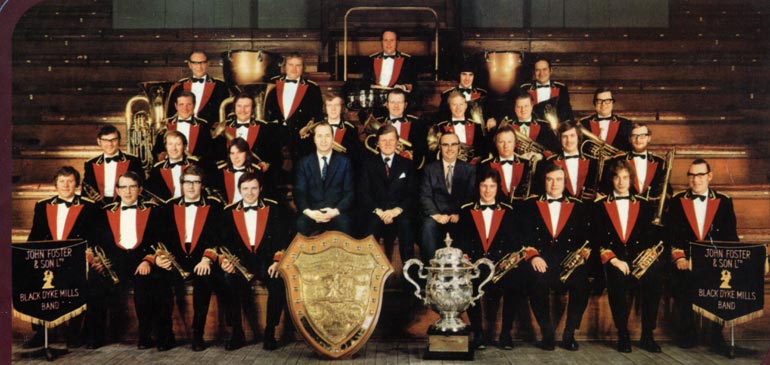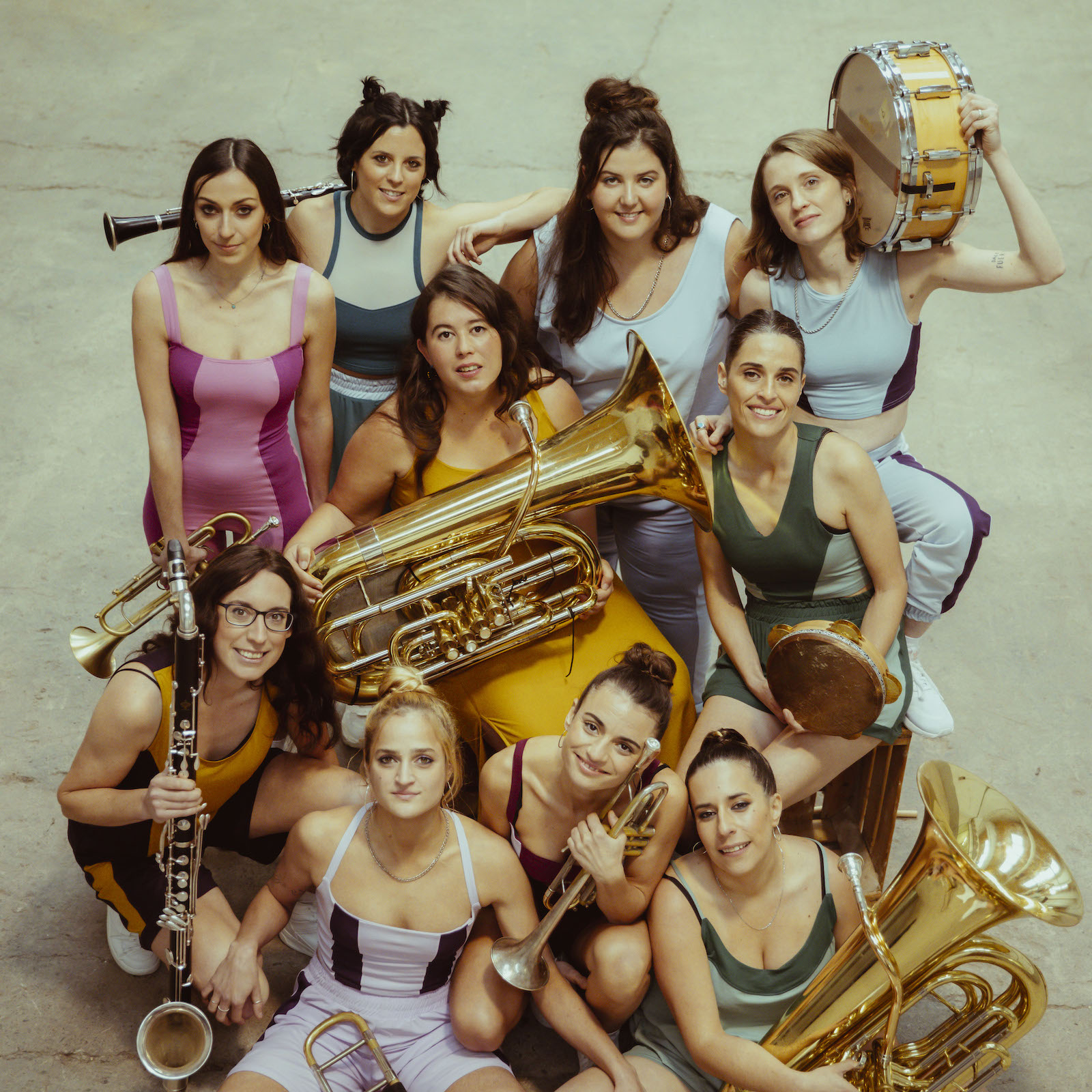
| The Black Dyke Mills Band (1972) |
The British Brass Band movement, which started in the U.K. during the Industrial Revolution was brought about as an activity to keep the workers of collieries (coal mining companies) out of trouble and was primarily an amateur movement.
With sets of matching instruments, a wealth of original music and arrangements, and a tradition of competition, the brass band movement thrived throughout the 19th and 20th centuries, eventually spreading to North America and throughout the world.
British Brass Band (Wikipedia entry)
What is a Brass Band? - from the North American Brass Band website
Several classical composers have written music specifically for brass band. These include:
- Malcolm Arnold: Little Suite for Brass
- Granville Bantock: Prometheus Unbound
- Judith Bingham: Prague
- Harrison Birtwistle: Grimethorpe Aria
- Arthur Bliss: Kenilworth
- Derek Bourgeois: Blitz, Concertos Nos. 1 & 2 for Brass Band, Concerto Grosso & Apocalypse
- Arthur Butterworth: Three Impressions for Brass, Odin
- Simon Dobson: The Drop, Lydian Pictures & Penlee
- Edward Elgar: The Severn Suite
- Edward Gregson: Of Men and Mountains, Connotations & Variations on Laudate Dominum
- Hans Werner Henze: Ragtimes and Habaneras
- Joseph Holbrooke: Clive of India
- Gustav Holst: A Moorside Suite
- Joseph Horovitz: Ballet for Band & Sinfonietta
- Herbert Howells: Three Figures Suite
- John Ireland: A Comedy Overture & A Downland Suite
- George Lloyd: Diversions on a Bass Theme & English Heritage
- Frederik Magle: The Hope for brass band, choir, organ and percussion
- William Mathias: Vivat Regina
- John McCabe: Cloudcatcher Fells, Salamander & The Maunsell Forts
- John Pickard: Gaia Symphony & Eden
- Edmund Rubbra: Variations on 'The Shining River'
- Robert Simpson: Energy & Volcano
- Phyllis Tate: Illustrations
- Bramwell Tovey: Coventry Variations, Pictures in the Smoke & The Night To Sing
- Ralph Vaughan Williams: Overture – Henry the Fifth, Prelude on Three Welsh Hymn Tunes & Variations for Brass Band
- Philip Wilby: Paganini Variations, A Breathless Alleluia, ...Dove Descending..., Vienna Nights, Revelation, Masquerade, Northern Lights, New Jerusalem & Red Priest
- Thomas Wilson:
Processional, Sinfonietta, Refrains and Cadenzas, Cartoon for cornet
and brass band, Cartoon for solo cornet and brass band, Cartoon for
brass ensemble and optional percussion, Cartoon for cornet and piano
- Nicole Piunno: Bright Shadow Fanfare
- Lucy Pankhurst: Nightlights
- Labor of Love - Percy Fletcher
- It's the first 'original' test piece, commissioned by John Henry Iles for the National an the Crystal Palace in 1913. Promotes themes of "keep working for the company", musical propaganda to keep the men from unionizing.
- Henry V: Overture - Ralph Vaughan Williams
- A Breathless Alleluia - Philip Wilby
- Fanfare for the Grenadier Guards - Imogen Holst
- Bright Shadow Fanfare - Nicole Piunno and Nightlights - Lucy Pankhurst , performed live by the Athena Brass Band
British-style Brass Bands are not only prevalent in the U.K., but they can be found around the world, partly due to Colonialism and partly due to their universal popularity.
North American Brass Band Association (NABBA)
Brass Band of Battle Creek - The foremost American Brass Band, that includes our own Professor Michael Gause.
Athena Brass Band - "The Athena Brass Band is the first all-female brass band in the United States, named after Athena, the Greek goddess of wisdom. The band was formed in 2003, by Laura Lineberger, to perform at the International Women's Brass Conference with Anita Cocker Hunt as conductor. This successful debut resulted in many more invited performances and several commissioned compositions. Jessica Sneeringer has been the music director of Athena Brass Band since 2012. The musicians include current or former members of the U.S. Army Band, the U.S. Coast Guard Band, Brass Band of Battle Creek and the New Sousa Band. There are several college professors and public school music educators, conductors, music therapists, a sound engineer, a music publisher and a composer; also a nuclear physicist, a biologist, a sociologist, an MBA and an author. Most of the ladies also play with a NABBA brass band"
Iowa Brass - Formerly known as the Eastern Iowa Brass Band, is our local Brass Band based out of Solon
I've also created a Brass Band Showcase playlist on YouTube, which includes many of these works as well as several documentaries and live performances by Brass Bands.




:format(jpeg):mode_rgb():quality(90)/discogs-images/R-2829304-1302922609.jpeg.jpg)

